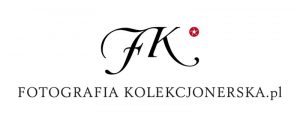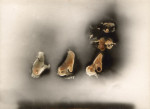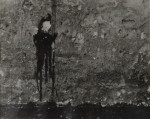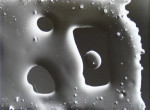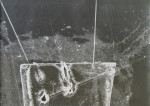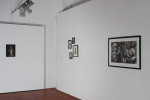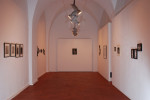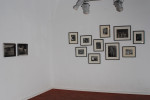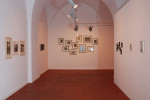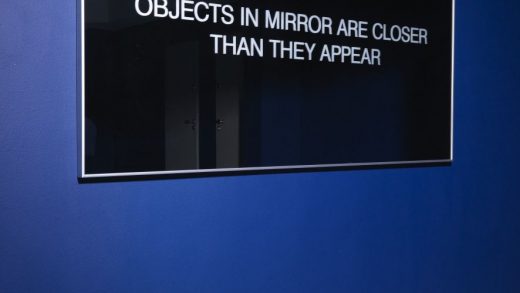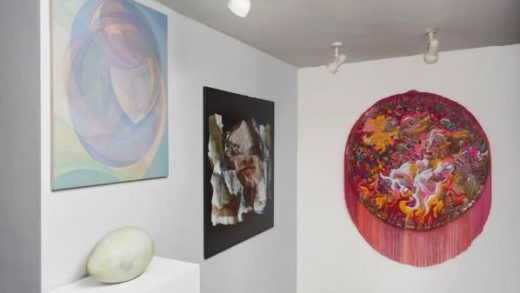opening 11/03/2016 at 7:00 PM
exhibition until 29/04.2016
organizer:
Piekary Gallery
św. Marcin 80/82
61-809 Poznań
CK Zamek, Dziedziniec Różany
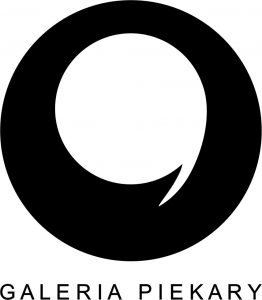
partner:
![]()
opening hours: Mon-Fri 10 a.m. – 6 p.m.
free entry
Marek Piasecki is one of the most eminent Polish photographers of the 20th century and a classic of the art in Poland, acclaimed on a par with Zdzisław Beksiński, Jerzy Lewczyński, Bronisław Schlabs, Zbigniew Dłubak and Fortunata Obrąpalska.
Piasecki was born in 1935 in Warsaw, which he left with his parents when the Warsaw Uprising broke out, to spend the subsequent years in Cracow. Having passed his secondary school examinations, he began studying history of art at the Jagiellonian University and worked at the National Museum. He quit studies after two years, to devote himself to creative practice. In 1958, Piasecki became member of the 2nd Cracow Group. As a photographer, he documented the projects of Teatr na Tarczyńskiej from Warsaw, and then Teatr Osobny, where he met Miron Białoszewski (becoming the author of his portraits). He would attend the salon of Henryk Stażewski and Maria Ewa Łunkiewicz-Rogoyska where he was introduced to Erna Rosenstein, among others. In 1959 Piasecki was accepted as member of the Association of Polish Visual Artists. In 1958-1962, the artist worked for Tygodnik Powszechny. His illustration and photographs were featured in publications of eminent publishing houses, such as Wydawnictwo Znak and Wydawnictwo Literackie, as well as in numerous periodicals, e.g. Fotografia, Polska, Poezja, Więź, or Ty i Ja. In 1967, the artist left Poland and settled in southern Sweden, where he continued creative work until his passing on September 30th, 2011.
Marek Piasecki’s oeuvre is difficult to classify due to the great variety of techniques he used and currents in art with which his work overlapped. The most easily recognizable are his heliographs, works created on photosensitive material and the series of photographs of dolls in original frames fashioned by the artist. The heliographs were the outcome of a range of experiments on photosensitive material. Piasecki arrived at compositions of abstract, highly geometrized forms or poetic, supple and organic creations, akin to what one sees under a microscope. That “chemical painting”, as the artist himself described it, was supposed to elicit emotional and aesthetic experience. It is worth noting that heliographs were a starting point for more elaborate experimentation involving other techniques (e.g. collage and assemblage), though in smaller formats. Those were the miniatures, pieces widely commented by art critics at the time. Jerzy Ludwiński observed: “The very technique of painting is so complex that one does not notice it anymore. The only important thing is what Piasecki sought to show: those curious arrays of forms in their ultimate shape, not their materiality or technique which yielded them […].” (Kamena, no. 17, 1959).
Dolls stand out as idiosyncratic pieces in the artist’s body of work (works from the series were shown for the first time in 1963, at a solo exhibition in the Temple of Diana in Warsaw). Beginning in the latter half of the 1950s, Piasecki would also create assemblages composed of abandoned and broken objects, placed subsequently in thick frames-boxes (quite often they contained e.g. dolls, juxtaposed with other items which at times proved difficult to identify). Interestingly enough, as time went by, the assemblages “grew” to gigantic dimensions, forming one, cohesive constellation in Piasecki’s studios. These arrangements of objects which filled entire interiors were also displayed by the artists at exhibitions in Sweden: My Room in Lund and My Room in Södertälje.
Selected solo exhibitions:
2016
Marek Piasecki. With Care, Piekary Gallery, Poznań
2014
Marek Piasecki. Heliographs, Miniatures and Dolls, Mummery + Schnelle, London
2008
Marek Piasecki: Fragile, Zachęta National Gallery of Art, Warsaw
2004
Marek Piasecki, Starmach Gallery, Cracow
1975
Krognoshuset Gallery, Lund
1969
St. Paul Gallery, Stockholm
1968
St. Thomas Gallery, Copenhagen
1967
Desa Showroom, Cracow
1966
Marek Piasecki. Objects. Krzysztofory Gallery, Cracow
1963
Temple of Diana, Warsaw
1960
Exhibition of Miniatures by Marek Piasecki, Klub Pod Jaszczurami, Cracow
1959
Show of Miniatures by Marek Piasecki, Krzysztofory Gallery, Cracow
Selected collective shows:
2017
A-Geometry. Hans Arp and Poland, The National Museum, Poznań
2014
Cliches of Imagination: Marek Piasecki / Miniatures & Roger Ballen / Apparitions, Asymetria Gallery, Warsaw
2004
75th Anniversary of Art Association Aura, Krognoshuset Gallery, Lund
1994
Exhibition of the Cracow Group, National Gallery of Art Zachęta, Warsaw
1992
Exhibition of the Cracow Group, Palace of Art, Cracow
1991
Collection of 20th-Century Art from the Museum of Art in Łódź, Zachęta State Gallery of Art, Warsaw
1985
Contemporary Art Photography in Poland, The National Museum, Wrocław
Contemporary Art Photography in Poland, Zachęta State Gallery of Art, Warsaw
1984
Apocalypse – Light in Darkness, St. Cross Church, Warsaw
1977
Polish Photographic Art, Museum of Modern Art, Zagreb
1975
In the Circles of Surrealism, The National Museum, Wrocław
1970
Mikro, Prisma IV Gallery, Lund
Bara Lund, Prisma IV Gallery, Lund
1968
Fri Polsk Konst, Sveagalleriet, Stockholm
1960
Wielopole as part of the AICA Congress, Cracow
1959
3rd Exhibition of Modern Art, Central Bureau for Art Exhibitions, Warsaw
1957
3rd Exhibition of Modern Art, Central Bureau for Art Exhibitions, Warsaw
Marek Piasecki also participated in numerous Exhibitions of the Cracow Group at the Krzysztofory Gallery in Cracow: (18th) 1987; (16th) 1980; (15th) 1978; (14th) 1977; (13th) 1975; (12th) 1973; 25th Anniversary of the People’s Republic of Poland, 1969; (9th) 1968; (8th) 1967; (7th) 1966; (5th) 1964; (4th) 1963; (2nd) 1960; (1st) 1958.
His works may be found in the collections of such institutions as the National Museums in Cracow, Poznań, Warsaw and Wrocław, Museum of Art in Łódź, Museum in Tarnów, Modern Musset in Stockholm, Arki för Decorativ Konst in Lund, Malmö Museum in Malmö, as well as in private collections in Poland, Sweden, Great Britain, Denmark, Finland, France, Japan, Switzerland, Italy and the United States.
Magdalena Piłakowska
media patronage:
![]()
